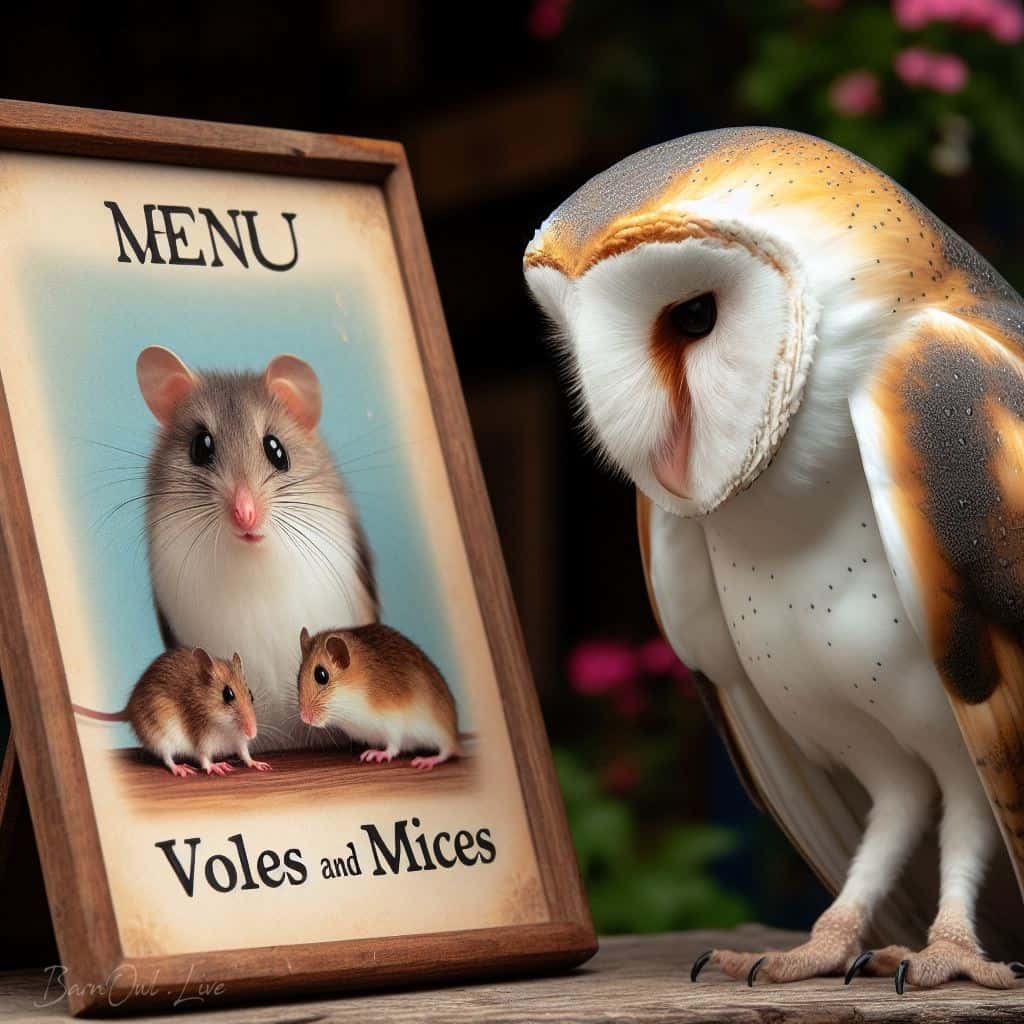At the heart of the barn owl’s menu lies a preference for small mammals, particularly mice and voles. These rodents make up the bulk of their diet and serve as the primary target during their nightly hunting expeditions. Barn owls’ exceptional low-light vision and acute hearing allow them to locate these elusive prey in complete darkness. Their silent flight, facilitated by specialized wing feathers, enables them to approach with unparalleled stealth, ensuring a swift and efficient capture.
While mice and voles are the mainstay, barn owls are opportunistic hunters, showcasing adaptability in their dietary choices. Other rodents, including rats and shrews, may also find themselves on the barn owl’s menu. This opportunism allows barn owls to thrive in diverse environments, from farmlands to grasslands, where their ability to control rodent populations is crucial for preventing agricultural damage.
The art of swallowing whole is a distinctive trait of the barn owl’s feeding ritual. Small mammals, the primary fare of these night hunters, are engulfed in one continuous motion. This adaptation aligns with the owl’s hunting style, allowing for a swift and efficient dining process without the need for the protracted task of tearing apart larger prey.
Occasionally, barn owls may include birds in their diet. This is more likely to occur during the breeding season when they are actively seeking food for their growing chicks. While birds, especially nestlings, may be targeted, they constitute a smaller proportion of the barn owl’s overall diet compared to their focus on small mammals. The adaptability to diversify their diet based on seasonal and environmental factors highlights the resourcefulness of these nocturnal hunters.
Insects, while not a staple food, may also be inadvertently consumed during hunting. As barn owls navigate through grass or vegetation in pursuit of small mammals, insects disturbed by their presence may become part of their diet. However, insects play a minor role compared to the primary reliance on small mammals.
One intriguing aspect of barn owl dietary habits is the regurgitation of pellets. These pellets contain indigestible parts of their prey, such as bones, fur, and feathers. The analysis of these pellets provides valuable insights into the diversity of prey species in a particular habitat, offering researchers a glimpse into the intricacies of the barn owl’s hunting success and diet.
